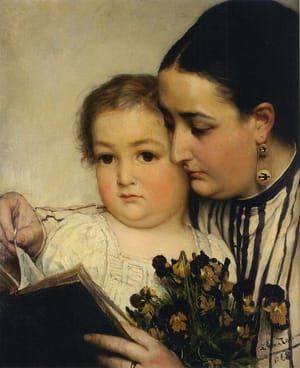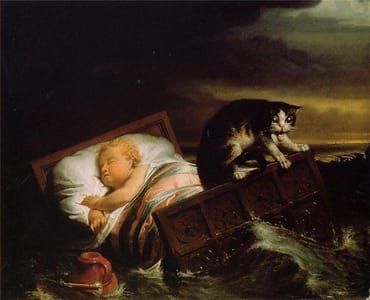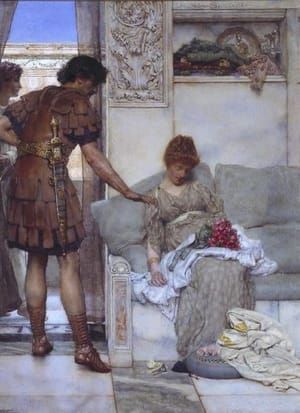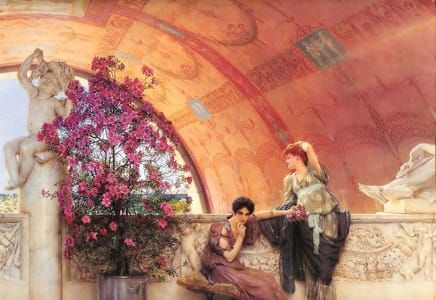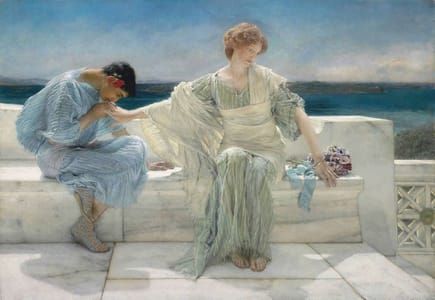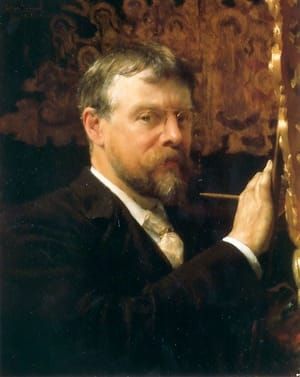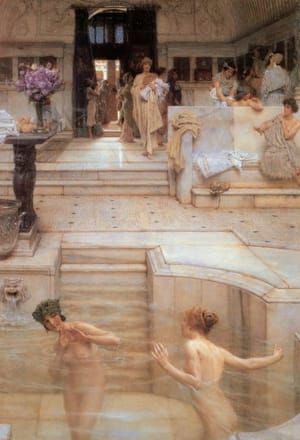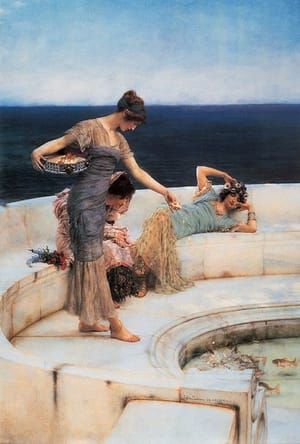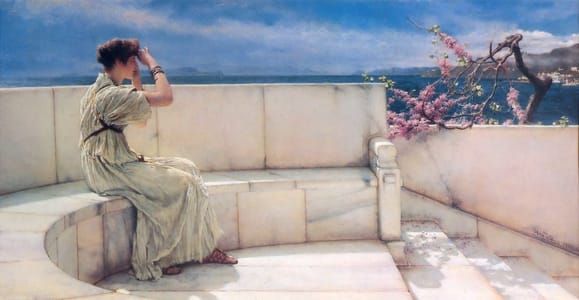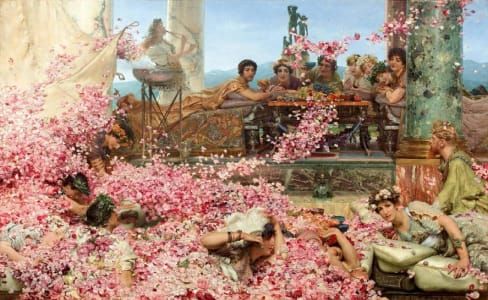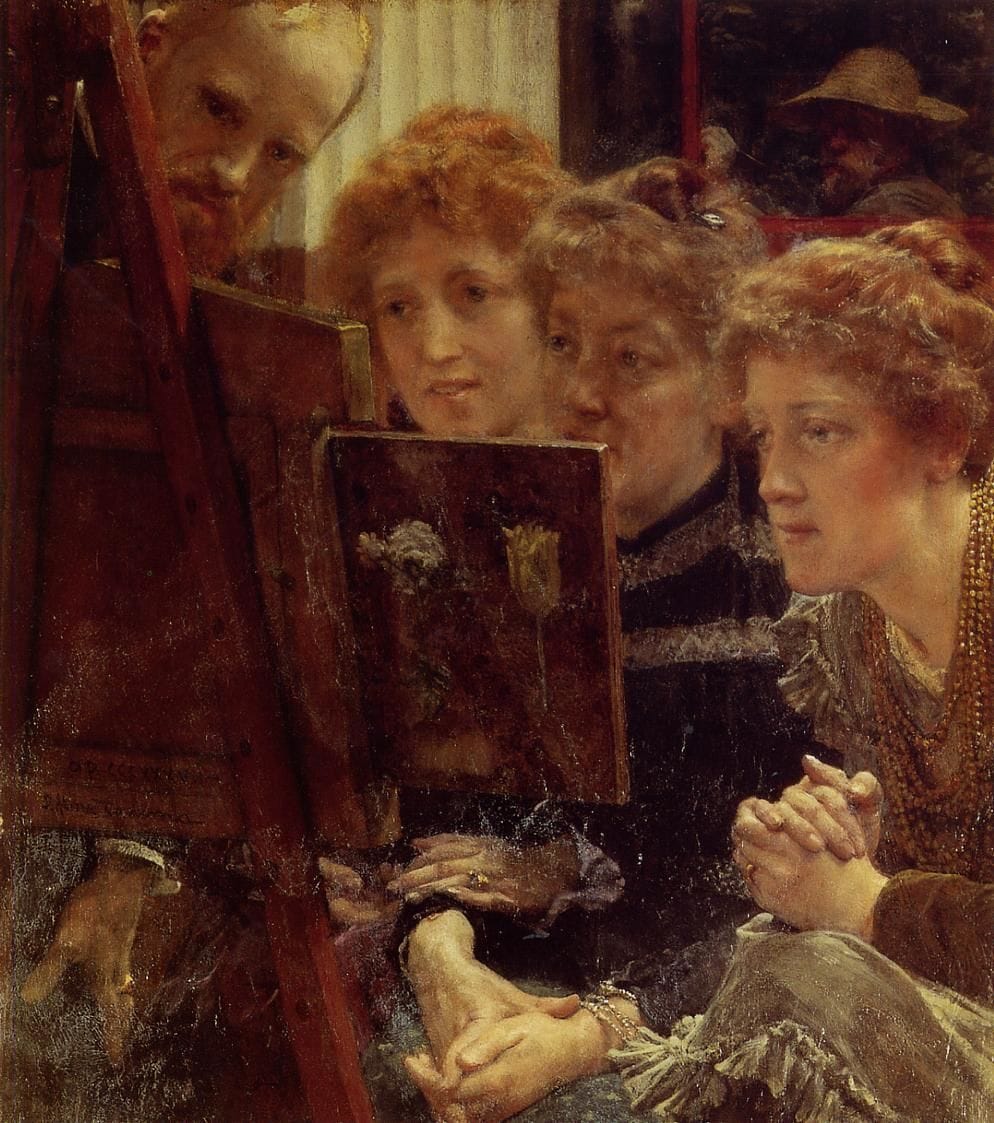

A Family Group, 1896
Lawrence Alma-Tadema
...this painting-within-a-painting by Lawrence Alma-Tadema depicts his artist wife and her siblings examining an earlier work by the couple, painted to symbolize their marriage.
Who are we looking at?
The figure on the right is the artist Laura Alma-Tadema (née Epps), who sits next to her sisters and brother. Lawrence and Laura met when she was studying with Ford Madox-Brown and married in 1871. Next to Laura are her sisters Emily Williams and Ellen Gosse, both also talented artists, followed by their brother Dr Washington Epps on the left. The family resemblance is evident in their red hair and sensitive expressions. Alma-Tadema was said to have “grown fond of them all” and gave this painting to his wife as a present for their 25th wedding anniversary.
What are they looking at?
The four siblings are looking at two self portraits painted by Lawrence and Laura to commemorate their marriage 25 years earlier in 1871. The work was designed as a kind of diptych: the portraits sit side-by-side in a central panel, flanked by doors either side. It can be identified by the flowers painted on the door that is visible: a yellow Dutch tulip is painted alongside a white English rose, symbolising the nationalities of the husband and wife.
Although in this painting the flowers are shown on the same door, in the original work there is one flower on each side. They are likely to have been presented alongside one another here to retain the symbolism of husband and wife together, in a composition that cuts off the right-hand door.
Who is in the corner?
In a mirror in the top-right corner, we see the artist at work wearing a straw hat. In 1893, Laura had painted a self portrait entitled Satisfaction, in which a mirror reflects a glimpse of her husband in the garden, wearing the same hat. Lawrence’s inclusion of himself in the hat is likely to be an homage to this work, supported by the green patterned background of the reflected image, which could represent a garden.
Where are they?
Although in this painting we can only see a glimpse of the setting, Alma-Tadema used his opulent home, Townshend House, as a backdrop for several paintings. He collected archaeological drawings and photographs of classical sites and ruins, which acted as source material for many of his works. This thorough and eclectic approach extended to his home, which took inspiration from design styles ranging from traditional Dutch to Egyptian, Ancient Greek, Pompeiian, Byzantine and Japanese.
Who was Lawrence Alma-Tadema?
Born in Friesland, Netherlands in 1836, Lawrence Alma-Tadema settled in London in 1870 and became one of the most successful artists of Victorian Britain. His many themes included contemporary portraits, landscapes and Egyptian historical and genre scenes, but he was best-known for classical subjects, particularly decadent images of domestic life in antiquity. His devotion to historical accuracy led to early 20th-century Hollywood directors referring to his work when recreating the ancient world. However, his paintings were simultaneously dismissed by critics for being sentimental and kitschy. Since the 1960s, scholars have re-evaluated his work, reinstating him as a crucial figure in 19th-century British art.
(https://www.royalacademy.org.uk/article/how-to-read-it-alma-tadema-family-group)
12 x 11 in
© 1896 Lawrence Alma-Tadema
Lawrence Alma-Tadema
artistArthur
coming soon
